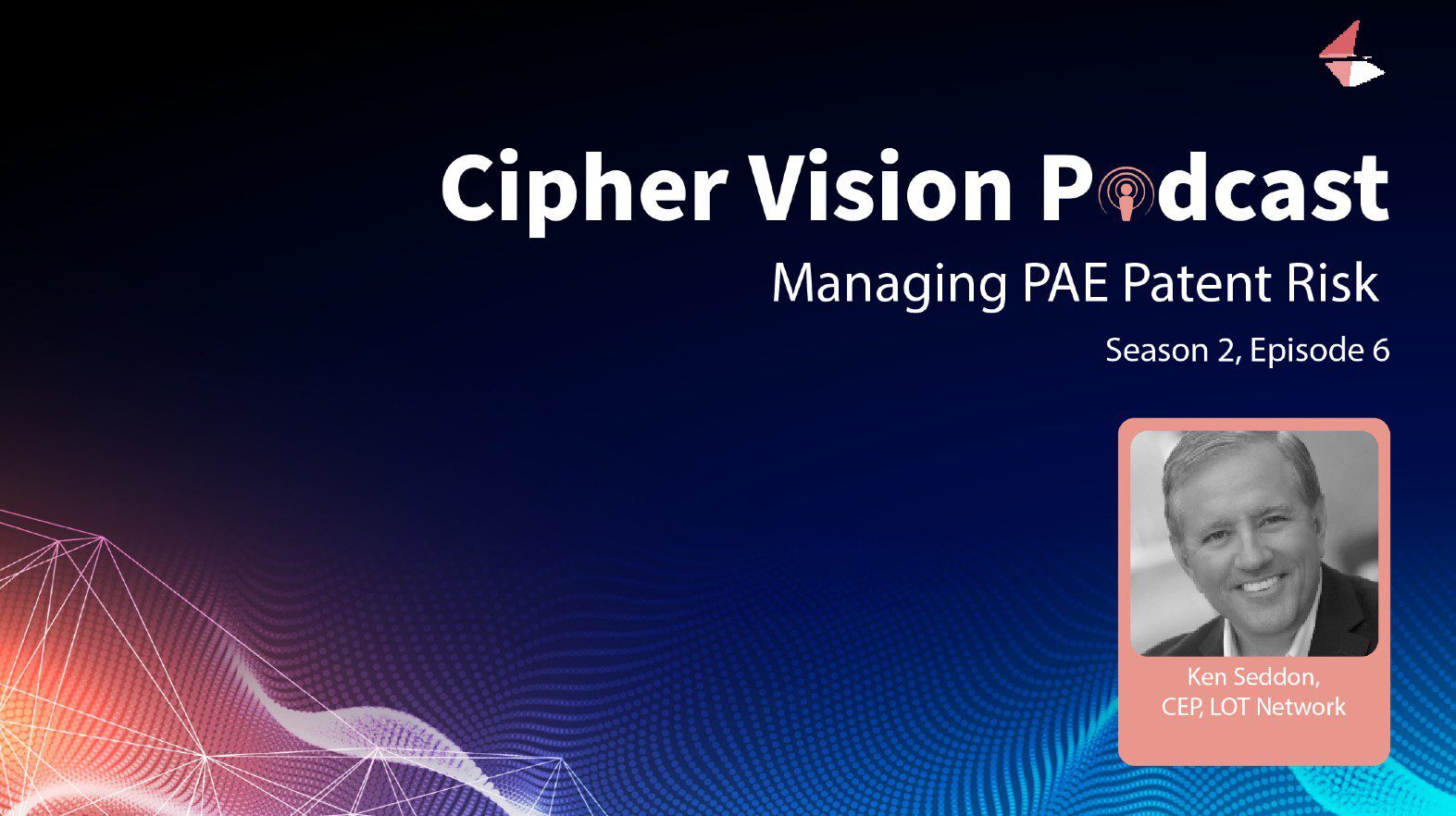Managing PAE Patent Risk

Guest:
- Ken Seddon, CEO of LOT Network.
Episode Highlights
Understanding Patent Assertion Entities
Their sole purpose in life is to buy patents on the open market and assert them against other operating companies.
These PAEs don’t make products, they don’t have R&D. They have no other purpose in life other than to monetize patents, by asserting them against other operating companies.
Every year, patent assertion entities will file anywhere from 2000 to 4000 patent lawsuits a year in the United States, against the high-tech industry.
This was causing the industry to have to spend billions every year, just defending these lawsuits and billions more settling these lawsuits.
A patent is just an asset of a company. Companies go through life cycles, and they might decide to exit one business area and go in a different direction. And so they sell off all the assets related to a particular business area.
So in many cases, it could be a deliberate sale or it could be an unintentional sale. But at any moment in time, our friends at AST tell us that there are about 30 to 35,000 patents for sale on the open market that anyone can buy at any moment in time.
On how the landscape has changed
20 to 30 years ago, if you were an in-house patent counsel, you only had to worry about who were your five or six direct competitors. And your job then would be to develop an IP strategy to make sure that you could defend yourself against the other five or six competitors.
Your job was to simply identify who your competitors are, and make sure that you had enough patents that read on the products of your competitors. So that you felt comfortable, and you had what was referred to as mutual assured destruction. So that reasonable companies wouldn’t start suing each other, or you could negotiate a cross-license and have freedom to operate.
More people are out there that have patents. If you look at some products in the high-tech industry, like semiconductors, like phones, it may take hundreds of thousands, maybe even a million patents to cover a single product. And now the number of patents that are involved in making a high-tech product has grown dramatically.
PAE’s, they don’t make products, your patent portfolio is useless against an a patent assertion entity, you can’t punch back.
On who is Fuelling the PAEs
That’s the irony of the problem. It’s the high-tech industry, it’s companies that are causing the problem to themselves. Anywhere from 85 to 87% of the patents that PAEs are using to sue the high-tech industry are actually being sold by companies in the high-tech industry themselves.
So it’s the self propagating problem against the high-tech industry. And yet historically, the high-tech industry was looking to Congress or the White House or to the Judiciary to solve this problem when they themselves were the very ones causing it.
LOT Network and solutions against PAEs
What LOT Network is, it’s a nonprofit organization. It’s a community of companies who have agreed to take responsibility for the very problem it’s causing. It’s now over 2100 companies who have all agreed that if any of their patents should ever fall into the hands of a patent assertion entity, then and only then do the other members of the community get this free license.
So it’s effectively the high-tech industry solving for this PAE risk through herd immunisation. They’re solving the problem on their own terms and conditions, rather than relying on some governmental agency to do it for them.
It’s an idea that’s certainly sticking and now spreading beyond just the high-tech industry, as even now Pharma and Life Sciences and just about every industry are now joining.
My job isn’t done until we get to 100% of all high-tech patents in LOT Network that might be of interest to a patent assertion entity.
What’s next on the LOT agenda?
There’s other problems that these people can solve in the industry, we can leverage the resources and create other value and benefits with this community. We’re doing this because we don’t want anybody spending money having to defend themselves against patent assertion entities. I’d rather have companies spend that money in R&D, new products, or give it back to your shareholders.
We have The Diversity and Inclusion group that was formed now by Google, Amazon, Disney, Meta, Microsoft and Cruise, and they’re sharing all of the best known methods about how to promote diversity at their companies.
We have many of our members, Google, Lenovo, Canon, Red Hat, Microsoft that have donated 1000s of patents to LOT, which we are giving away to startups to try to help startups be more successful. So we’re constantly looking for ways to leverage the strengths of the community.
On the future of patent strategies
I think the indications are that IP globally is getting stronger. As IP gets stronger as an asset, the risks associated with that asset class have to be taken more seriously, because the consequences for not managing that asset only grow.
The walls between industry have come down. And regardless of what industry you’re in, you are now incorporating the technology of every other industry around you.
You cannot ignore this topic. You ignore this issue at your detriment. If you do not have an IP strategy, and you just have your head in the sand, IP will bite you and you will get sued by either a competitor or by a NPE. And it may be the end of your business.
Nigel’s key takeaway
Patents protect innovation. So it’s the very nature of patent rights that they create tension between competitors. But the digital and communications revolution has changed the game. Now risk can come from anywhere: startups, disruptors, China. For the PAE, risk is different. It can rightly be characterized as self-harm, 87% of PAE assets come from operating companies, the same group who complain vehemently about PAE risk.
Ken, thank you for the leadership that has enabled LOT Network to grow. This has not only mitigated risk for your 2000-plus members, but it’s also a perfect example of industry taking control through collaboration to achieve the greater good.

Looking for new ways to classify patent data and create bespoke technology clusters?
Find out how you can use the LexisNexis Cipher Classification system to read 44m+ patents globally, pull the relevant patents into a classifier defined by you, and avoid the hard work of finding the right ones.
